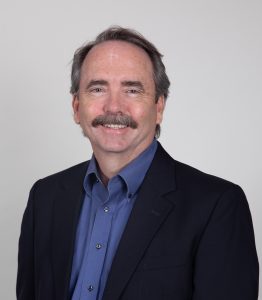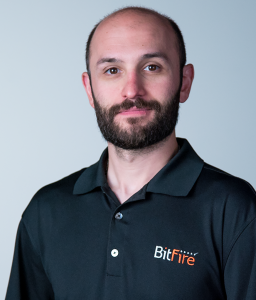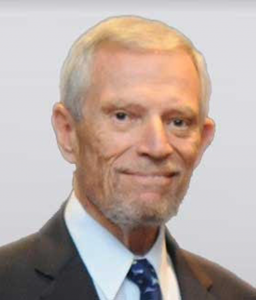Ken Aagaard, Bob Sullivan Launch BitFire; Combines IP Tech, Production Services
Story Highlights
The move towards de-centralized production, where various technical and signal transport elements for a sports production are in disparate locations, has accelerated in recent months. It’s created new opportunities for established production entities but also opened the door to some new ones. The latest entrant is BitFire, launched this month by former executives from SNEAKY BIG Studios and Ken Aagaard, longtime sports production professional and former SVG chairman.
“The global pandemic has thrust the world into an innovation and upgrading cycle demanding better, faster, and easier methods for live contribution and collaboration,” says Bob Sullivan, president and CEO, BitFire and former GM of SNEAKY BIG Studios. “While the marketplace has responded with a saturation of concepts, some of the greatest minds in broadcast have come together to launch a heightened level of broadcast transmission and production that notable sports, news, and entertainment brands in the world rightfully demand.”

BitFire (www.bitfirenetworks.com) is a combination of software-based technology to allow for signal transport over the open Internet and hardware-based servers with encoders and decoders to guarantee signal quality levels if desired.
“When I was at SNEAKY BIG, we did some backhaul transmission tests with BitFire as a backup to fiber and I was amazed at the quality and the latency which was as good if not better than fiber,” says Sullivan. “That’s how it came on my radar.”
The company will also provide remote production services as it acquired the assets of d2 Productions (production trucks and studio facilities in Boston) and, soon, in Phoenix. Production services will include, but not be limited to remote production control rooms (REMI,) camera packages, live production, and post- production.

Jim Akimchuck, BitFire, CTO, says the team can quickly respond to evolving client needs.
Jim Akimchuk, BitFire, CTO, says the TV production experience of all involved is a difference maker.
“We know our customer’s problems are always time sensitive as that is the nature of live TV,” he says. “We’re not a generic technical solution for a real-world problem; we know what it is that our customer is trying to do. As a result, we are responsive, agile, and in the best possible position to help.”
Both Sullivan and Aagaard say that responsiveness and agility means more than just being agile during an ongoing event: it also means rapidly evolving the types of services in response to client needs.
“Our whole focus is broadcast-quality assets and white glove service,” says Sullivan. “We don’t want to just sell boxes or x-number of feeds. We want to be nimble as we know what we are capable of, we know how to listen, and we want to pivot and adapt the technology to the need as opposed to saying we can’t meet your needs so have a nice day.”

Ken Aagaard, BitFire, director, says the key to success will be proving out the capabilities of the technology and the team.
Aagaard, who is a board member, says he has been on the decentralized production bandwagon for a while and when he saw the opportunity to work with the staff at BitFire he saw an opportunity to move the technology forward and help solve production challenges he says existed before the current COVID-19 crisis.
“Things were going in this direction regardless of the current situation and even when this is over it is still going to happen,” he says of the ability to have production personnel working as one team despite being in different locations and away from the venue where an event, be it sports, entertainment, education, or corporate, is taking place. “For me this is the right place, right time, and with the right people.”
Aagaard says it is the people that will make the difference as the goal is to not only provide technology like the BitFire platform but also talented broadcast engineers and production personnel who can ensure production needs are met. The transmission system can also move data, IFB, PL, and tallys, according to Aagaard.
“Everything that you do from a truck can be done from a NOC,” he says. “And we will have some smart broadcasters brought in who will be able to set up in their basement and control productions, trouble shoot, and more. In the end its going to be about the people and we have smart people with smart technologies and software that can enable us to control the systems and that is the unique part of BitFire.”
BitFire acquired the assets from d2 Productions, based in Boston, to capture video and audio for an event as well as provide physical control room facilities (currently in Boston but soon to be Phoenix as well and then additional locations) to give those dedicated production staff a chance to ensure high-quality services. There will also be an opportunity to use the software-based tools to allow engineers to manage a production from their own home.
The BitFire technology value proposition begins with the BitFire Transport Network, a fully managed IP video transport service that provides point-to-point delivery of broadcast-quality video to wherever it needs to go. Production team members tap into that network via FireBridge, a browser-based system that allows for one-to-one or one-to-many collaboration. A “virtual” studio and stage, FireBridge brings together participants via a video-conference-like experience while the production facility takes isolated feeds and broadcasts to the masses. No software installation or account set-up is required.
For those locations where a higher level of production quality is required a FirePower stackable HD server with encoders and decoders can be deployed within the talent or production personnel’s home to deliver the video packets with deterministic latency and frame-accurate synchronization – even across appliances.
“Instead of just firing up a quick call FirePower provides a more sustained relationship with a more consistent feed by dropping it in the house of the talent or production personnel,” says Sullivan.
Sullivan, Akimchuk, and Aagaard are joined by Ben Grafchik who is VP of business development and Timothy Sullivan who will serve as chairman.
Even though the company has just been established it is working with system integrator IMT to build out additional operations centers in Boston where it has 6,500 sq. ft. of operational space and Phoenix where it has 16,000 sq. ft. The goal is to have mirrored facilities to cover clients across the country and also virtualize control room systems beyond Boston and Phoenix.
“This is an equally challenging and exciting time for the world of broadcast,” said Ken Aagaard. “There is an urgency for innovation and smart technology that has the capability to keep us connected in a more sophisticated fashion than any other time in history. No one could have predicted the wide variety of new and unexpected scenarios that have come about due to this pandemic. In the end we just have to prove it and show we can do it and do production in a way that is consistent, affordable, flexible, and managed.”
